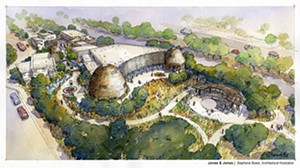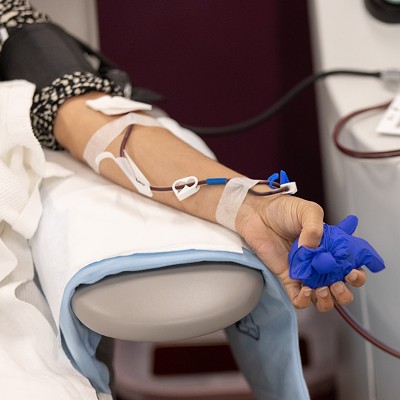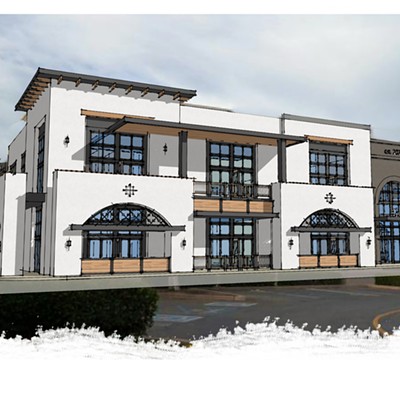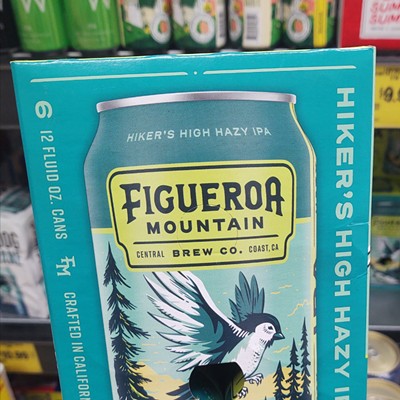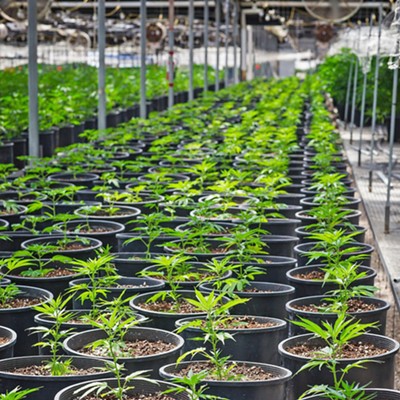After decades of work and various delays, the Santa Ynez Band of Chumash Indians recently announced plans to begin construction on a cultural center and museum by the end of this year.
Tribal leadership and staff, architects, and designers gathered on Oct. 22 at the reservation's Tribal Hall to present plans for the tribe's Santa Ynez Chumash Museum and Cultural Center to community members. The $32 million project, which will include the construction of a 14,000-square-foot facility and 3.5-acre park, is expected to take two years to complete, according to Kenneth Kahn, tribal chairman for the Chumash.
It's been nearly 50 years since the tribe first began working toward the creation of a museum in the '70s, when a traditional tule 'Ap–a dome-shaped house built from willow trees and tule grass–was erected on the Santa Ynez Chumash Reservation to showcase cultural artifacts. The project has since run into its fair share of obstacles, including a lengthy federal fee-to-trust land transfer process.
"It's been a long time coming," Kahn said, adding that it's exciting to finally see the project coming to fruition. "I think the most important thing is that some of our elders who've been working on this for so many years, they'll be able to see it."
Through the cultural center and museum, Kahn said the tribe hopes to expand its artifact collection, historical exhibits, and educational programs in an effort to further share Chumash culture and history with community members.
The museum, which was designed by Jones & Jones, a Seattle-based, award-winning architecture company renowned for its work with indigenous peoples, will reflect Chumash culture through its architecture and include a dedicated gathering place where visitors can learn about past and present Chumash culture, according to a press release.
Kahn said the museum itself will include five separate sections–a Welcome House, Heritage House, Traditional Tule House, Samala Language House, and a Tomol House–that will symbolize a village and also provide differing exhibits and learning experiences.
Inside the museum, Kahn said various cultural artifacts, replicas, multimedia works, and graphics will be on display, and it will be one of the first Leadership in Energy and Environmental Design (LEED)-certified tribal museums in the U.S. The project will feature high-efficiency systems to protect the tribe's artifact collection, and locally sourced materials including stone from the Santa Ynez River.
The cultural park adjacent to the museum will feature an amphitheater for storytelling and a living village. Its landscaping will utilize recycled water and include plants the Chumash traditionally gathered for food, medicine, and crafting tools used in everyday life. A basketry and cordage garden will highlight plants used for weaving their highly specialized baskets.
Both spaces will be used for the Chumash's many educational programs, Kahn said, including language and crafting classes, field trips for local elementary schools, and community tours.
The facility and park will be located near Highway 246 on about 7 acres of land that was recently taken out of Santa Barbara County's jurisdiction and placed into federal trust for the tribe, adding it to the Chumash reservation.
The Chumash first applied to place the land in trust in 2002, and it was approved by the Bureau of Indian Affairs years later in 2014. Another larger piece of land, 1,400 acres known as Camp 4, is currently going through a similar process. That decision is still working its way through Congress, Kahn said, and the Chumash are waiting on the U.S. Senate vote to affirm the fee-to-trust transfer on Camp 4 that was approved by the Bureau of Indian Affairs in 2017. It's unclear when that vote might take place, Kahn said.
Although the process has been a lengthy one, Kahn said it gave the tribe time to collect cultural artifacts and flesh out plans for the museum and park.
"The tribe is very excited to be able to share its culture with the community and to be able to create the Chumash museum for all people," he said.


